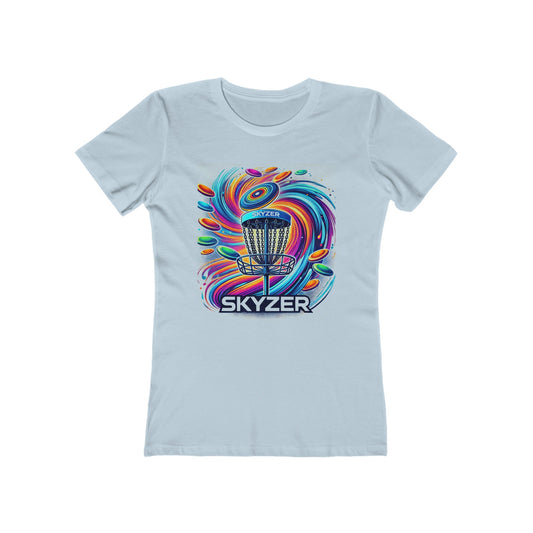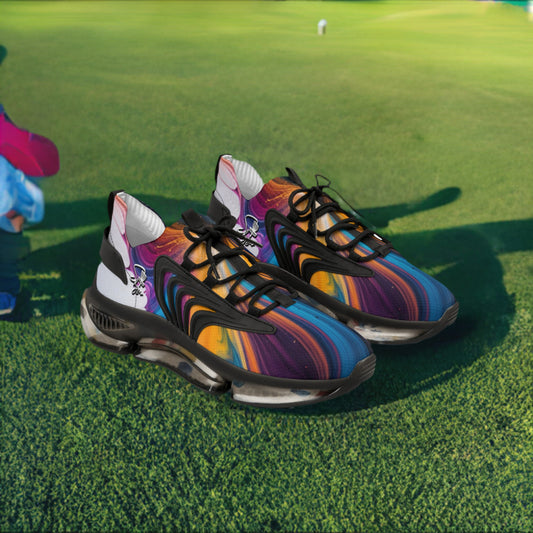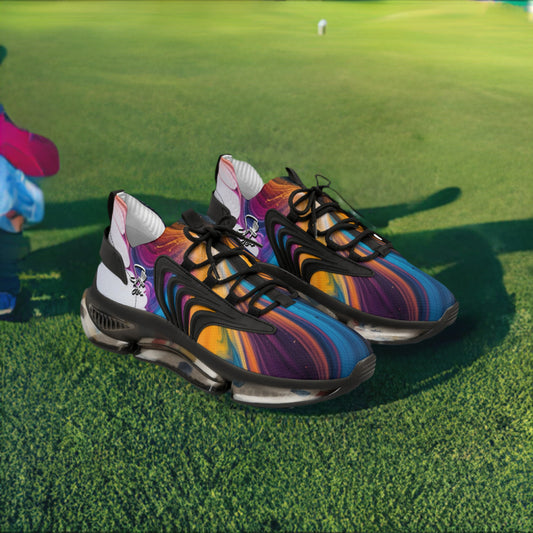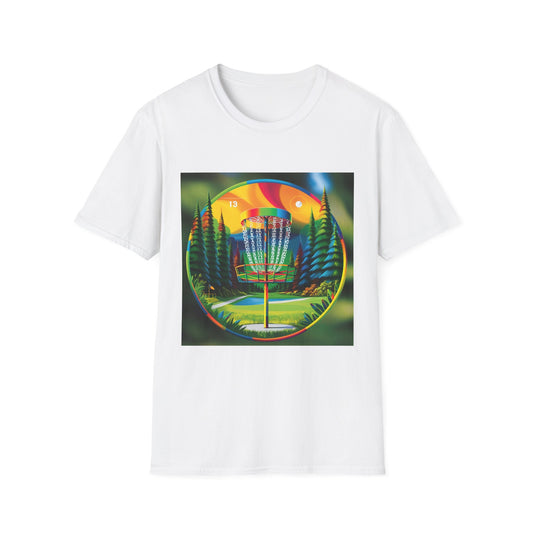
Dissecting Your Bag: Understanding Disc Types and Technical Specs
Share
Disc golf is as much about the discs you choose as the shots you make. From putters to distance drivers, each disc plays a unique role in your game. In this post, we’ll take a deep dive into disc categories, technical specifications, and flight ratings so you can build a bag that fits your style and maximizes performance on the course.
1. The Four Main Disc Categories
Disc golf discs are generally divided into four types. Each type is designed for a specific part of the game and features distinct physical characteristics.
A. Putters
Purpose and Characteristics:
Putters are used primarily for approach shots and putting. They have a blunt rim, a flat or slightly domed top, and are designed to fly slowly and straight. Their emphasis on accuracy over speed makes them ideal for short-range shots and for landing softly in the basket.
Flight Numbers and Specs:
-
Speed: 1–3
-
Glide: Moderate (typically around 3)
-
Turn: Approximately 0 (neutral)
-
Fade: Low (usually 1)
-
Dimensions: Diameter is generally around 21.0–21.2 cm with deep rims for improved grip on the basket.
Example: The Innova Aviar is a classic putter, celebrated for its consistency and ease of use in high-pressure putting situations (Innova Discs Product Literature).
B. Midrange Discs
Purpose and Characteristics:
Midranges serve as the bridge between putters and drivers. They are designed for accuracy over moderate distances, making them ideal for approach shots and controlled drives. Midranges typically offer a more pronounced “glide” than putters while still providing a forgiving flight path.
Flight Numbers and Specs:
-
Speed: 4–6
-
Glide: High, often rated 4–5
-
Turn: Typically around 0 to -1 (some may be slightly understable)
-
Fade: Mild (usually 1–2)
-
Dimensions: Midranges usually have a larger diameter (approximately 21.7 cm) and a somewhat thicker rim than putters.
Example: The Discraft Buzzz is renowned for its versatile, straight flight and is a favorite among players who require precision without sacrificing moderate distance (Discraft Product Guide).
C. Fairway Drivers
Purpose and Characteristics:
Fairway drivers are optimized for controlled distance and versatility. They are intended for tee shots where both distance and accuracy matter but require less power than a distance driver. Their design allows for subtle shot shaping, which can be critical on dogleg or wooded holes.
Flight Numbers and Specs:
-
Speed: 6–9
-
Glide: Moderate to high (rated 4–6)
-
Turn: Varies, typically from 0 (stable) to -2 (understable), based on the mold
-
Fade: Moderate (around 2)
-
Dimensions: Fairway drivers generally share similar diameters with distance drivers (approximately 21.1 cm) but have a wider rim—often around 1.6 to 1.9 cm.
Example: The Innova Teebird is a classic fairway driver, beloved for its reliable, straight flight and ease of control (Innova Discs Product Literature).
D. Distance Drivers
Purpose and Characteristics:
Distance drivers are engineered for maximum velocity and distance. They have the highest speed ratings and the widest rims among disc golf discs. However, they require a lot of power to get up to their optimal speed and are less forgiving if your form falters.
Flight Numbers and Specs:
-
Speed: 10–14
-
Glide: Often rated between 4 and 6; while they maintain speed, the glide isn’t as pronounced as in mids
-
Turn: Slightly negative (e.g., -1 to -3) for understable models, while overstable versions might have 0
-
Fade: Pronounced (rated 3–5) to help them “finish” their flight
-
Dimensions: Distance drivers have the widest rims (approximately 2.0–2.5 cm thick) but maintain a similar overall diameter to fairways (around 21.1 cm).
Example: The Innova Destroyer is a popular distance driver among professionals for its blend of distance and controllability when thrown properly (Innova Discs Product Literature).
2. Decoding Flight Numbers
Manufacturers use a four-number system to describe a disc’s flight characteristics: Speed, Glide, Turn, and Fade. Understanding these numbers can help you predict how a disc will behave under different conditions.
-
Speed: Ranges from 1 to 14. A higher speed indicates that the disc is designed for high-powered throws. It doesn’t measure how fast the disc actually flies, but rather how fast it needs to be thrown to achieve its intended flight.
-
Glide: Ranges from 1 to 7. This measures the disc’s ability to remain airborne. Higher glide ratings mean the disc will stay in the air longer, which is especially important for lighter players or shots in calm conditions.
-
Turn: Typically expressed as a negative number for understable discs (which tend to turn to the right for a right-handed backhand throw). A disc rated –1 or –2 will “turn” into the throw, while a disc with a turn of 0 or positive is more stable.
-
Fade: Ranges from 0 to 5. This describes how sharply a disc finishes its flight, or “fades,” to the left (for RHBH) at the end of its flight. Higher fade ratings result in a more abrupt finishing hook.
The right combination of these numbers, along with your throwing style and the conditions on the course, ultimately determines the disc’s flight path.
3. Choosing the Right Disc for Your Game
Selecting the perfect disc depends on various factors such as your throwing style, skill level, and the specific shot requirements. Here are some quick tips:
-
For Beginners: It’s often recommended to start with slower discs (lower speed ratings) as they require less force to achieve optimal flight. Midranges and putters are great for learning shot control and distance without risking wild flights.
-
For Accuracy: If you’re aiming for a precise approach shot or putt, choose a disc with a stable flight profile (minimal turn and fade). Many players rely on trusted midranges like the Discraft Buzzz or Innova Roc.
-
For Maximum Distance: Advanced players might experiment with distance drivers. However, these discs require a high-powered throw and consistency in form. It helps to work up to these using controlled drills and understanding your body’s capabilities.
-
Experimentation: Every disc interacts differently with your throwing style. Testing various discs on an open field can help you understand which molds best suit your natural motion, leading to a more personalized and effective bag.
4. The Impact of Plastic and Weight
While the mold and flight numbers are key, the material (plastic type) and weight of a disc are also critical:
-
Plastic Type: Discs are available in various plastic blends ranging from baseline (softer, grippier) to premium (more durable, often clearer). Baseline plastics may “beat in” to become more understable, while premium plastics retain their flight characteristics longer.
-
Weight: Generally, most golf discs range between 150 to 180 grams. Heavier discs tend to be more stable and less affected by wind, but may require more power to get up to speed. The right weight for you depends on your throwing power and the conditions you typically play in.
5. Conclusion
Understanding disc types and technical specs is essential not only for building a versatile bag but also for improving your overall game strategy. Knowing what each disc does—and how it does it—allows you to select the perfect tool for every shot, whether you’re approaching, driving, or putting. Experiment with different molds, understand your own throwing dynamics, and let the science of disc flight guide you to lower scores on the course.
Works Cited:
Innova Discs. “Product Literature – Innova Disc Specifications.” Innova Discs, 2023.
Discraft. “Discraft Product Guide & Flight Ratings.” Discraft, 2022.
Professional Disc Golf Association. “PDGA Official Rules of Disc Golf.” PDGA, 2023.
Jensen, Chris. “Disc Turn and Flight Mechanics.” The Disc Lab, 10 May 2019.
Walker, Steven. “Tuesday Tips: Field Work and Bulletproof Putting.” Ultiworld Disc Golf, 13 July 2021.
Additional sources and product literature provided further context on disc designs and flight technology.
























